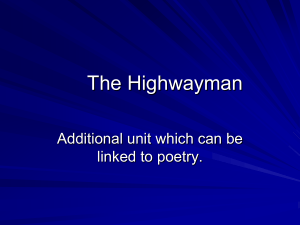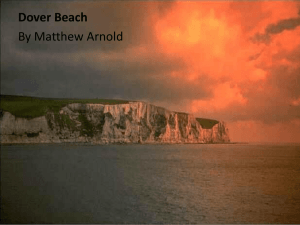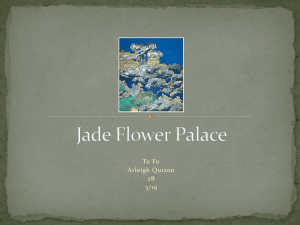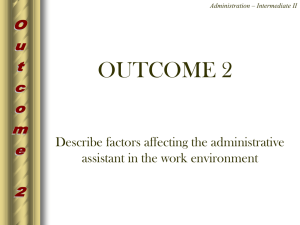How to teach reading
advertisement
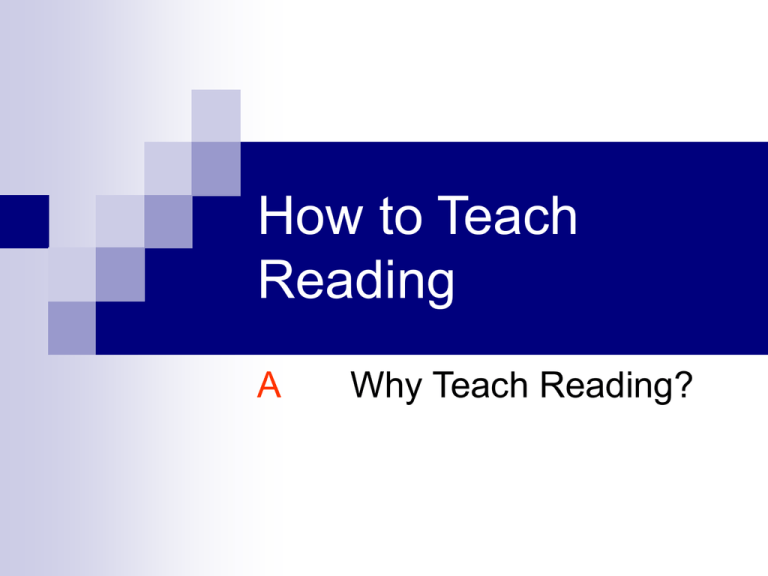
How to Teach Reading A Why Teach Reading? 1. What is your response to the following questions? a What reasons are there for getting students to read texts in English? b What different elements of English can students study in a reading text? 2. Complete the following sentences. a When I learnt a foreign language reading was… b I think reading in the foreign language classroom is … c Students need to learn how to read… B What kind of reading should students do? Authentic materials appropriate for beginner/elementary students When reading in class, students should only be given texts which are authentic. C What reading skills should students acquire? Scanning (searching a text quickly for specific information) Skimming (reading a text quickly to get the general idea) Reading for detailed information Reading for pleasure D What are the principles behind the teaching of reading? 1. What would you expect to get out of a good reading text a as a teacher? b as a students? 2. What have the following concepts got to do with using reading texts? active skill appropiate tasks engagement exploitation prediction response to content E What do reading sequences look like? 1. Look at the reading text and complete the tasks which follow it. Your Sleep and You Miriam Kellaway Reports How much beauty sleep do you need? According to Philip Sedgewick, research fellow at the Sleep Disorders Clinic at the Department of Mental Health at St. George Hospital, most of us need roughly eight hours a night if we want to stay healthy. And we need to have a regular routine too. Problems for tired people: ●More chance of bugs(小毛病) and infections ● Shift workers (people who work at different times of day and night) get more infectious diseases than the rest of us。 ● More chance of stress ● More need for energy food like chocolate, coffee, etc. Students in the USA say tiredness causes overeating. In a survey of hospital nurses across the country, ninety percent of those working on the night shif gained weight. ● Irritablity, grumpness(抱怨) Canadian sleep researcher Harvey Modofsky, at the Toronto Western Hospital took blood from sleeping people and he found that sleeping bodies were fighting infection better than those that were awake and in a recent study of 9, 000 adults in the UK those who slept between six and a half and eight and a half hours a night were more healthy than those who slept less. REM & Non-REM REM stands for Rapid Eye Movement. That’s the time we dream, when we sort out all the memories, thoughts and feelings in our head. Non-REM is often called Deep Sleep. Without REM people become forgetful, irritable and less able to concentrate. Deep sleep provides us with physical and mental recovery. Things not to do in bed (accrding to sleep experts): Eat Read Watch television Work Drink caffeine Smoke cigarettes Have alcohol (it interferes with REM sleep. It can make you tired and irritable the morning after the night before). A .What level do you think it might be suitable for? B. What kind of comprehension tasks could you do with it? C. How would you get students Engaged with the topic of the text? D. What language, if any, would you focus the students’ attention on in the reading text for a Study exercise? 2. Can you think of answers to these reading-related questions? A. What kind of Engage activity would you use before students have about rock music? B. What follow-up activity might you use after your intermediate students have read a text about animal rights? C. Where would you look for authentic reading materials for your beginner students? What would they be able to cope with? D. Write a mock car advertisement as a reading text for beginner students. How easy is it? What problems did you have doing it? What are the principles behind the teaching of reading? Principle 1: Reading is not a passive skill Reading is a incredibly active occupation. To do it successfully, we have to understand what the words mean, see the picturethat the words are painting, understand the arguments, and work out if we agree with them. If we do not do these things—and if students do not do these things—then we only just scratch the surface of the text and we quickly forget it. Principle 2: Students need to be engaged with what they are reading. As with everything else in lessons, students who are not engaged with the reading—not actively interested in what they are doing—are less likely to benefit from it. When they are really fired up by the topic or the task, they get much more from what is in front of them. Principle 3: Students should be encouraged to respond to the content of a reading text, not just to the language. Of course, it is important to study reading texts for the way they use language, the number of paragraphs they contain and how many times they use relative clauses. But the meaning, the message of the text, is just as important and we must give students a chance to respond to that message in some way. It is especially important that they should be allowed to express their feelings about the topic—thus provoking personal engagement with it and the language. Principle 4: Prediction is a major factor in reading. When we read texts in our own language, we frequently have a good idea of the content before we actually read. Book covers give us a hint of what’s in the book, photographs and headlines hint at what articles are about and reports look like reports before we read a single word. The moment we get this hint—the book cover, the headlines, the word-processed page—our brain starts predicting what we are going to read. Expectations are set up and the the active process of reading is ready to begin. Teachers should give students “hints” so that they can predict what’s coming too. It will make them better and more engaged readers. Principle 5: Match the task to the topic We could give studnets Hamlets’ famous soliloquy “To be or not to be” and ask them to say how many times the infinitive is used. We could give them a restaurant menu and ask them to list the ingredients alphabetically. There might be reasons for both tasks, but, on the face of it, they look a bit silly. We will probably be more intersted in what Hamlet means and what the menu foods actually are. Once a dcision has been taken about what reading text the students are going to read, we need to choose good reading tasks—the right kind of questions, egaging and useful puzzles, etc. The most interesting text can be undermined by asking boring and inapproriate question; the most commonplace passage can be made really exciting with imaginative and challenging tasks. Priciple 6: Good teachers exploit reading texts to the full. Any reading text is full of sentences, words, ideas, descriptions, etc. It doesn’t make sense just to get students to read it and then drop it to move on to something else. Good teachers integrate the reading text into interesting class sequence, using the topic for discussion and further tasks, using the language for Study and later Activation(激活). What do reading sequences look like? In the following 4 examples, we are going to look four different kinds of reading texts and four different kinds of reading tasks. In each case we will see how the reading text fits into an ESA(Engage,Study, Activate) sequence. Example 1(elementary) In the first example for elementary, the teacher has introduced the topic of “attraction”. He asks the students what they find attraction in a person. With luck, the discussion of the topic should be enjoyable and amusing. He then tells the studnets they have to fill in the following chart about what their partner thinks is important when he or she meets a new friend. Very important Physical appearance Clothes Job or education Money and possessions Personality or character Religion Politics Other… important Not very important The students now have to list the qualities in order of importance for them as a whole class. The teacher then tells the class to read the text on the next page to see how their opinions are different from the men and women being described. When the students have read the text, the teacher allows them to discuss their answers in pairs, This is to give them a chance to clear up any small comprehension problems before they talk in front of the class. The students now have to complete the following task. Read the first part of the article again. Use these words to answer the questions below. eyes legs face smile figure teath Which do men think are most important? Which do women think are most important? Do you agree? The Main Attraction Suddenly it happens. You just know he’s the man for you, and you haven’t even been introduced yet. But how do you know? And can you make sure he feels the same way? Company investigate… What first attracts men to women? Whereas women tend to notice the eyes, teeth and smile in particular, men will be more likely to assess the face in general and pay more attention to figure and legs. According to a recent survey by Singles magazine, these are the top ten attributes that men and women look for in each other, in order of priority. Men look for a woman who is: Attractive Sincere Slim A non-smoker With a sense of humor Affectionate Tall kind Women look for a man who is: Tall Professional With a sense of humor Attractive(not necessarily handsome) Sincere Intelligent Handsome kind As a follow-up to these reading tasks, the teacher asks the students to think of people who they find attractive (friends, film stars, athlets, etc.). They are then asked to say what the most attractive thing about them is. The discussion can lead on to descriptive writing, etc. Notice that this patchwork lesson(补缀模式) started with an Engage activity, them went on to an Activate exercise (working with a partner), followed by an Active reading (do you agree with the passage?), a Study reading (answer the questions) before being followed up with Active exercise. Notice too, how important the first Active exercise was: it gave the students a chance to predict what was coming. Example 2 (lower intermediate) In the second example, the class is once again prepared for reading by discussion what, if anything, the students know about ghosts. The teacher may get them to say whether they believe in ghosts or not and if they have ever seen one. After that, the textbook from which this reading text is taken gives students some information about ghosts (that they are ususlly the result of a tragic death, that they appear at night, etc.). The students are now asked to read the text on page 74 to say whether Orcas Manor is a typical haunted house. This is a general reading task designed to let them get an overal picture of the text. For the next reading, the students are asked more detailed Study-type questions, eg. Complete the table Which ghost He killed… . 1previous owner 2 visitors 3 4 You can see him in… . The corridors The students can check their answers in pairs before the teacher puts the chart on the borad and has individuals come out and fill it in to check that the whole class have understood the text. Sandford Orcas Manor(庄园) Next to the church in the village of Sandford Orcas there is an old gatehouse. If you go through the gate you arrive at the sinister (不吉利的)manor house which is famous for its large number of ghosts. The present owner of the manor says it is difficult to keep servants because the ghosts frighten them. Many people have seen the ghosts of the previous owner. He was a farmer who committed suicide by hanging himself from the gatehouse, and he often appears in the garden wearing old working clothes. Another ghost is an 18th century priest who used to kill visitors while they were asleep in their beds. He still sometimes frightens guests in the middle of the night by standing over their beds holding a knife. The ghost of a servant sometimes walks along the dark corridors of the house. He murdered his master at Sandford Orcas, but nobody knows why. But perhaps the most frightening story is of a young man who grew up in the house and them became a sailor. While he was at sea, he killed a boy, and then went mad. When he retured to Sandford Orcas, they locked him in a room at the back of the house. He never left the room again, and died there several years later. On some nights when the moon is full, you can hear him screaming and banging on the door of the room. The teacher wants students to understand how we use pronouns to refer back to subjects we have already mentioned. He asks them who or what “it”, “them” and “He” refer to in paragraph two. What do “they, “their”, “he” refer to in paragraph three? As a follow-up task, students can write a description of a haunted house which they can invent. They can do this individually or in pairs or groups. Once again, a patchwork lesson has started with an Engage session where teacher and students talk about haunted houses and read some information about ghosts. Then they read for general understanding—an Active type of exercise—before Study the text—both for meaning and then for language use (personal pronoun use in text writing)– and then doing another Active follow-up. Example 3(intermediate) In this example for intermediate students, the students first look fat a picture of people sunbathing and say whether it is a positive, safe and attractive image—or whether it is the opposite. They are then shown the following magazine article. Polly Griffiths Goes down to the Sea for Advice on How to Look Good and Stay Safe So you think you’re too pale and want to get a good suntan this summer? Why not? Except that unless you’re careful the sun can make your skin old and leathery and can even give you skin cancer. If you must sunbathe (and let’s face it, lots of us think it’s a good idea), then have a look at these gorgeous guys and babies I found on the beach and see which of them is like you. I’m the type who always burns. It’s because I’m fair-skinned– and I’ve got red hair and freckles. That’s why I’m so good-looking! But I still burn unless I use a really high APF (sun protection factor)– about 20 in strong sun. Melinda I have to be careful ‘cause I’m the type who burns easily. But I do tan in the end. If you’ve got fair hair and blue eyes like me you’d better use quite a strong sunscreen (an SPF of 15 to start with)… Jean Yeah I tan easily. People like me who are dark-skinned (with dark hair and brown eyes) are not only realy cool but we go even browner in the sun. I still use a sunscreen though, something light with an SPF of about 6… Alice Me, I’ve got built-in protection! I don’t burn, but I don’t sunbathes anyway. I mean what for? I like messing around on the beach though. So the message is: Check out what kind of skin you’ve got and then be safe and sensible– and have a good time! See you at poolside Bar! The teacher checks that they have understood by asking them questions like “What sun protection factor does Roger use?” “Does Melinda burn?” “Who is darkskinned, fair skinned?” etc. Students then use language from the article to describe themselves. In this straight arrow lesson, the teacher strats by Engaging the students with discussions of sunbathing. They then Study the text before going on to Activate the knowledge which the text has given them. Example 4(intermediate to advance) The final example shows that reading does not have to be a static activity dealing with prose passages. We can make much more dynamic than than. The teacher wants to get his intermediate students reading poetry, both because he thinks they will enjoy it (if done in an Engaging way) and because he thinks it can provide a useful focus for language study. He askes students if they like poetry. Can they remember any poems? What are they about? What do poets normally write about? He tells them that he is going to put students in groups of nine. Each student in the group will get a line from a poem. They can read it aloud but they must not show it to the other eight members of the group. The task of the group is to put the lines in the right order for the poem. He then hands out the following lines (at random) to the nine members of the group. And would suffice. But if it had to perish twice From what I’ve tasted desire I think I know enough of hate Ice is so nice I hold with those who favour fire. Some say in ice. To sat that for destruction Some say the world will end in fire. They read their lines out to each other and see if they can put them in the right order. Ideally, the groups will be standing up in circles so that the members can change position when the group have decided where their lines come in the poem. As the activity goes on, the teacher goes round the groups listening to how they are getting on. If they are not making any headway, he may prompt them by saying “Shall I tell you what the first line is?” or “Think of the sounds of the last word in each line” etc. When the students( think they) have finished the task, the teacher reads the poem aloud for them to check their version. This is what he reads: Some say the world will end in fire, Some say in ice. From what I’ve tasted of desire I hold with those who favour fire. But if it had to perish twice I think I know enough of hate To say that for destruction Ice is nice And would suffice. The groups have to decide on a good title for the poem which they can them compare with the original (which is “Fire and Ice”—the poem is by Robert Frost). The teacher can then ask students to say whether they like the poem and whether they think it is funny, sad, serious or tragic. He then gets them to describe the rhyme scheme of the last words in each line (, B, A, A, B, C, D, B, B). The teacher then gives students first lines of poems and tells them to write down their own (he can make it “the worst poem in the world’s competition to bring in humor) using a particular rhyme scheme, for example. This reading activity works because students really have to engage with the meaning and construction of the poem. When they are trying to put the poem in order, you will hear them discussing rhymes, punctuaton, logic and word meaning. It is popular with students (if used only occasionally), even with those who are not natural fans of poetry. Interestingly, after an initial Engage session, it quickly becomes a perfect mixture of Study and Activation— studying the poem’s construction whilst still activating all the language they know. More reading suggestons 1. 2. Students read small ads for holidays, partners, things for sale etc., to make a choice. They amplify the ads into descriptions. (intermediate/advanced) Students read jumbled instructions for a simple operation (using a public phonebox etc.) and have to put the instruction in correct order. (elementary/intermediate) 3. Students read a recipe and after matching instructions with pictures, they have to cook the food! (elementary/intermediate) 4. Students are given a number of words from a text. In groups, they have to predict what kind of a text they are going to read. They then read the text to see if their original predictions were correct. (elementary/intermediate) 6. Students have to match topic sentences with the paragraphs they come from. (intermediate and uper intermediate) 7. Students read a text and have to guess which of the group of people they think wrote the text (using the picture provided). (lower intermediate/advanced) 8. Students read a narrative with the end missing. In groups, they have to supply their own ending. (intermediate/advanced) 9. Students read a “factfile”about a country, population, machine or process etc. They have to convert the information into bar graphs(条线图)or pie charts(饼状图). (intermediate/advanced) The End Thank you!





